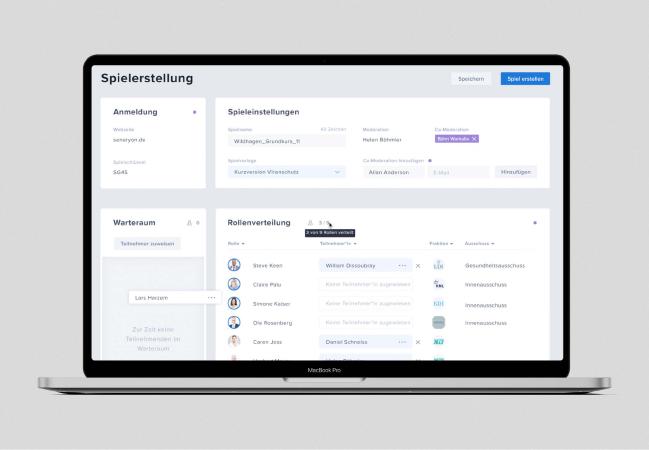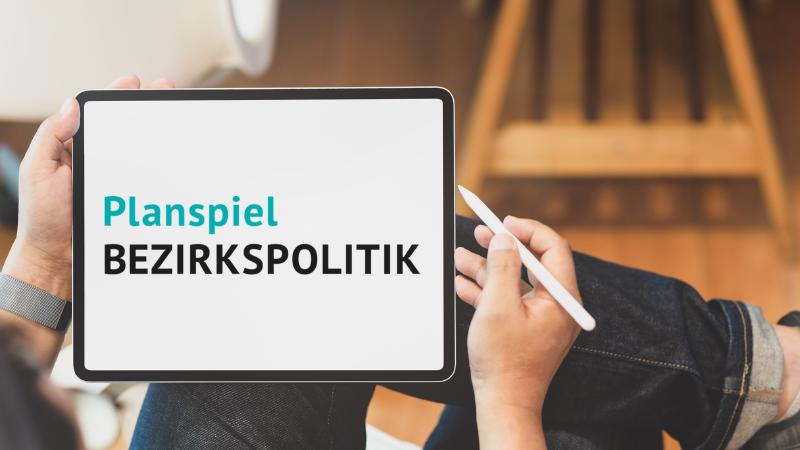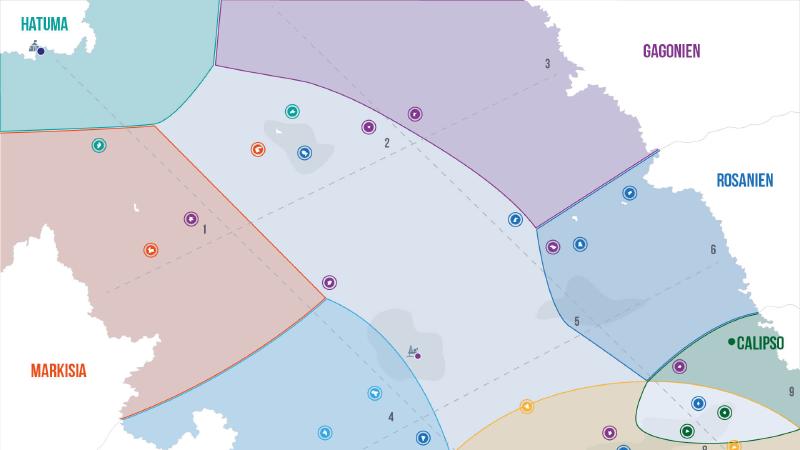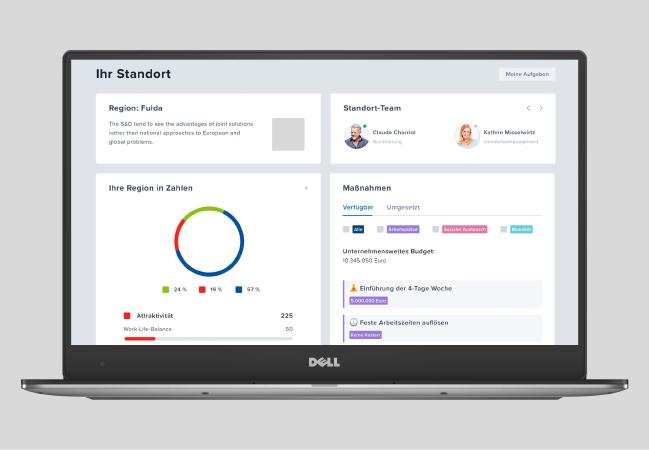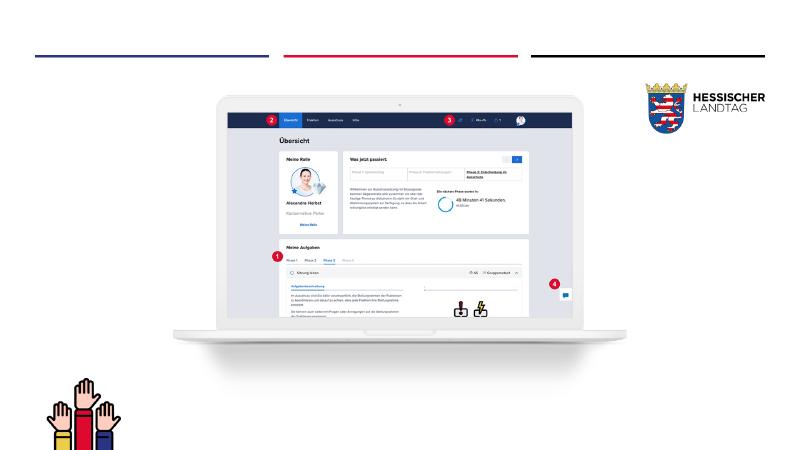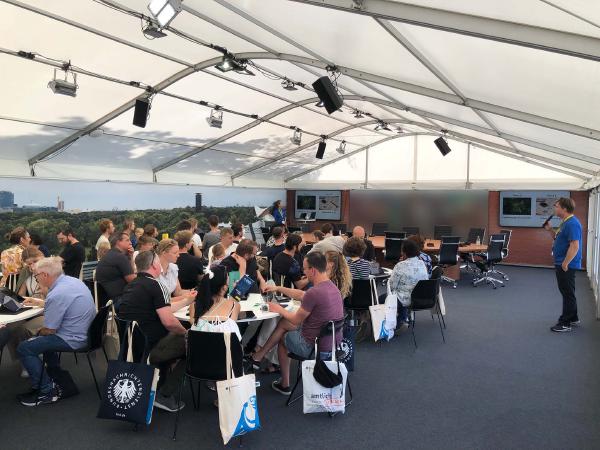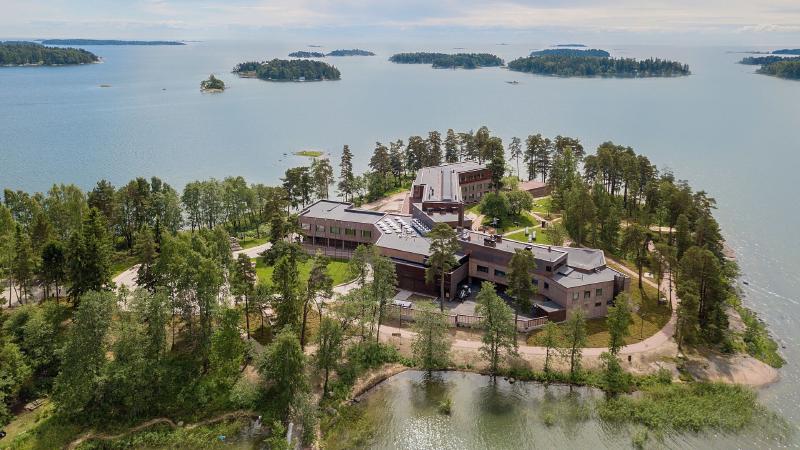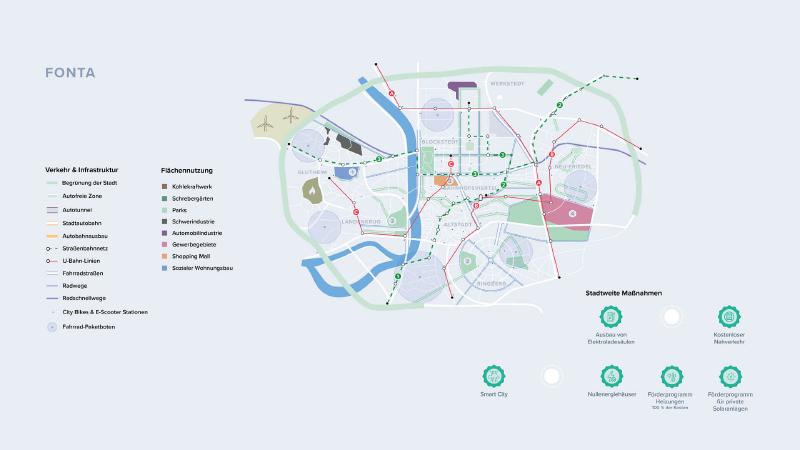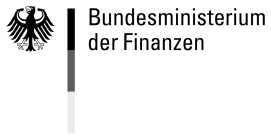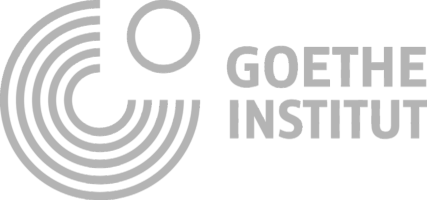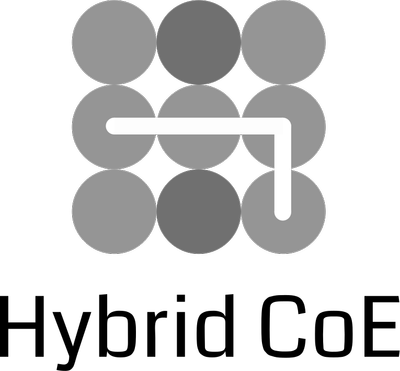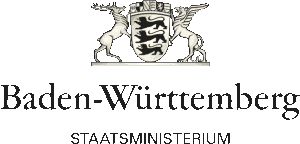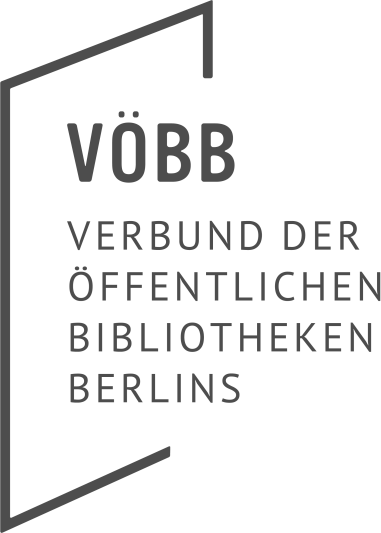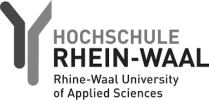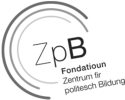Our system for more immersive and action-oriented game types
In our more advanced Senaryon-based simulation games, the participants immerse themselves in negotiations revolving around the implementation of measures. Typically, in a classical simulation game for civic education, the outcome of negotiations is textual, e.g., a resolution or declaration, or just a decision. However, in measures-based games, the outcome is more tangible as the actions of the participants manifest in changes in maps, charts, and in-game events related to the scenario. This interactivity allows participants to practice cause-and-effect learning, systems thinking, data interpretation, and data analysis.
Crucially, it achieves this without them having to learn and memorize the intricacies of such complex systems in advance. Instead, it deepens their immersion in the scenario and allows for a mode of engaging with complex systems in an experimental way. In other words, participants get a “feeling” for how the properties of a system are interconnected based on the outcomes of their actions, rather than gaining this knowledge through more abstract, theoretical study.
In some instances, the systems are employed before the simulation game even starts. In our popular Unionslabor game, the properties are tied to an introductory quiz which determines the participant’s goals for the game, based on their answers to the quiz questions. This works effectively like a “personality test” which assigns a participant one out of seven personality types. Those are then used to allow users to “level up” during the game by unlocking achievements. The systems also allow us to make the scenarios more immersive. For instance, in our “Changing Climate” games, the system triggers press releases for different combinations of roles based on the state of the game.
Another immersive and informative feature present in several games is a map which changes in accordance with the participants' actions. For example, the map in Conflict in the Gagonian Sea will update island occupancy, and military and coastguard ship positions, while the map in Climate Neutral City will display alterations in urban infrastructure influenced by CO2 reduction initiatives like introducing new public transportation routes or creating green streets.
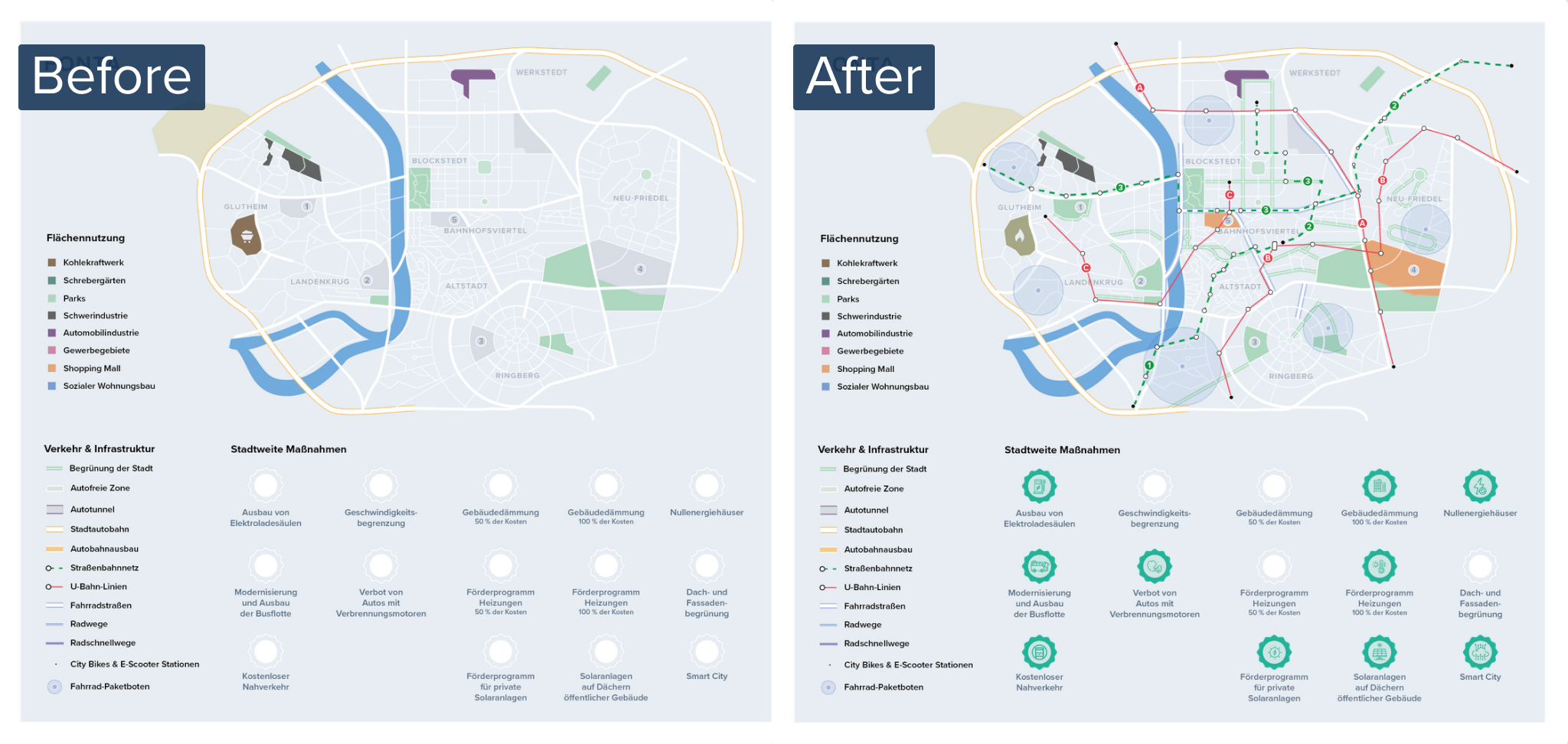
All these systems can also be combined. The below illustration shows how the enactment of two different measures can trigger changes that cascade through the properties system, and ultimately result in several visible effects.
The system’S versatility means that it can be applied to many different ends: they can serve as minor enhancements in a traditional simulation game or form the backbone of a game’s mechanics.


